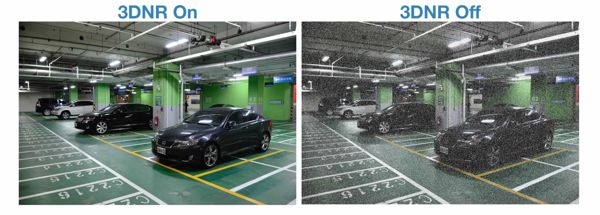
10 Jun Let’s Differentiate 2dnr And 3dnr Better
It happens often with the people who are far away from the lines of technology to face troubles to read between the lines when they are out and about for a CCTV Camera shopping. They face a hard time understanding the technical concepts and specifications that are associated with the CCTV cameras like 2D-DNR, 3D-DNR. They are just aware of the fact that these features help immensely in improving the quality of the image and the videos so captured, but the real details only a few people are aware of.
The experts and CCTV infrastructure professionals of Sure Secure in this blog have decided to offer its esteemed customers some much-needed knowledge on the two concepts that reaches their ears a lot when the CCTV cameras specifications pop up.
In our previous Blog, we have talked in detail about the image Digital Noise Reduction Technology and how well they play their part in banishing all kinds of noise and graininess from the images captured by the CCTV cameras in the low light settings. Today we are going to talk in great length about the two of these DNR elements and how this exceptional noise reduction approach that has been implemented in the security cameras helps pave way for clearer images.
As you all are aware of the images that are captured in the low light settings are sometimes grainy and cluttered with dark and light specs that cover them. This spot injection in the images is the courtesy of the various factors that led to the irregular fluctuations that transmit electrical signals (electromagnet), which aren’t the original part of the normal CCTV footage and thus obstructs the CCTV signal.
 To remedy this, CCTV cameras developers incepted a new technology called Digital Noise Reduction that offers cameras to click and record clear and sharp images even in the low light settings without a grain of noise ruining the image visibility and clarity.
To remedy this, CCTV cameras developers incepted a new technology called Digital Noise Reduction that offers cameras to click and record clear and sharp images even in the low light settings without a grain of noise ruining the image visibility and clarity.
Now, the CCTV Cameras that come with the specification of DNR Technology can either be equipped be 2DNR or 3DNR Technology, but not the both.
What’s the difference?
Here it is.
Look carefully!
The 2DNR Technology works by individually analyzing the different frames of the video, examine and identify algorithm, differentiate those pixels that can likely cause noise and correct them.
The 3DNR Technology goes one step ahead in rectifying the noise causing pixels by additionally analyzing the difference occurring between the successive frames in order to make the pixels noiseless and improve the clarity parameters.
It is a matter of fact that 3DNR Technology offers greater and much higher reduction in the noise in the images captured by the security and surveillance cameras than the 2DNR Technology. It just lacks on one front and that is while capturing the objects in motion it creates a motion blur in the field of view.
Sure Secure, the top and famous CCTV Installation UK providers have an array of CCTV Cameras instilling features far beyond your imagination.


 info@suresecure.co.uk
info@suresecure.co.uk 0203 916 5860
0203 916 5860

Sorry, the comment form is closed at this time.